Summer Treasure |
|||||||||||||||||||||||||||||||||||||||||||
 |
 |
||||||||||||||||||||||||||||||||||||||||||
Crocheted bag with stripes, worked in the round from the centre and outwards. Piece is crocheted in DROPS Paris.
DROPS 186-10 |
|||||||||||||||||||||||||||||||||||||||||||
|
INFORMATION FOR PATTERN: PATTERN: See diagrams A.1 and A.2. (A.2 shows how round begins and ends). COLOUR PATTERN: When switching colour at the beginning of a round, work slip stitch at the end of previous round with the new colour. When working with 2 colours on a row work as follows: Work last treble crochet with first colour but wait with last pull through, switch to next colour and work last pull through, then work next treble crochet. When working with two colours on a round place strand for the colour not worked over stitches from previous round, work around the strand so that it is hidden and follows in the round. STRIPES (circle): Cast on + ROUND 1: apricot ROUND 2: raspberry ROUND 3: off white ROUND 4: raspberry ROUND 5: apricot ROUND 6: shocking pink ROUND 7: powder pink ROUND 8: heather ROUND 9: dark wash ROUND 10: mustard ROUND 11: apricot ROUND 12: dark wash ROUND 13: * 1 treble crochet with dark wash, 1 treble crochet with off white *, work from *-* the entire round. ROUND 14: spray blue ---------------------------------------------------------- BAG: Worked in the round from the centre and outwards. Work 2 circles, the work the side of bag back and forth. Then work the side and circles together. CIRCLE: Work 6 chain stitches on hook size 3.5 mm with apricot and form a ring with 1 slip stitch in first chain stitch made. Work STRIPES (circle) and COLOUR PATTERN - see explanation above and pattern A.1 6 times in total on round (A.2 shown how round begins and ends). REMEMBER THE CROCHET TENSION! On 7th and 9th round work as follows: ROUND 7: Work 1 chain stitch, 1 double crochet in each of the next 2 treble crochets, 1 QUADRUPLE TREBLE CROCHET - symbol explanation - around LAST double crochet from 4th round, 1 double crochet in each of the next 5 treble crochets, 1 quadruple crochet around first double crochet from 4th round, * 1 double crochet in each of the next 5 treble crochets, 1 quadruple treble crochet around same double crochet as previous quadruple treble crochet, 1 double crochet in each of the next 5 treble crochets, work 1 quadruple treble crochet around next double crochet from 4th round, *, work from *-* 4 times in total, work 1 double crochet in each of the next 5 treble crochets, 1 quadruple treble crochet around same quadruple treble crochet as previous quadruple treble crochet, 1 double crochet in each of the next 5 treble crochets, 1 quadruple crochet around same double crochet as FIRST quadruple treble crochet on round, 1 double crochet in each of the next 3 treble crochets, finish with 1 slip stitch in 1st chain stitch at beginning of round = 12 quadruple treble crochets and 5 double crochets between each. ROUND 9: Work 1 chain stitch, * 1 double crochet in each of the first/next 14 treble crochets, 2 TRIPLE TREBLE CROCHETS TOGETHER - see symbol explanation *, work from *-* 6 times in total (work last triple treble crochet around first quadruple treble crochet on round), finish with 1 slip stitch in 1st chain stitch at beginning of round = 6 triple treble crochet together and 14 double crochets between each crochet together. When entire diagrams A.1 and A.2 have been worked, there are 120 double crochets on round and piece measures approx. 20 cm in diameter. Fasten off. Work another circle the same way. SIDE ON BAG: Work 78 chain stitches on hook size 3.5 mm with spray blue. Chain stitch row should measure 43 cm. Then work stripes and pattern as follows: ROW 1: Work with spray blue: 1 chain stitch to turn with, work 1 double crochet in every chain stitch (= 78 double crochets + 1 chain stitch). ROW 2: Work with dark wash: 1 chain stitch to turn with, work 1 double crochet in every double crochet. ROW 3: Work with heather: 3 chain stitches to turn with, work 1 treble crochet in next double crochet, 1 chain stitch, skip 1 stitch, * work 1 treble crochet with mustard in next double crochet, 1 treble crochet with heather in next double crochet *, work from *-* until 2 double crochets remain on row. Switch to mustard and work 1 chain stitch, skip 1 double crochet, 1 treble crochet in last double crochet. Thread the twined string through hole in each side later. ROW 4: Work with heather: 3 chain stitches to turn with, work 1 treble crochet in next treble crochet, 1 chain stitch, skip 1 chain stitch, * work 1 treble crochet with mustard in next treble crochet, 1 treble crochet with heather in next treble crochet *, work from *-* until next chain stitch on row. Switch to mustard and work 1 chain stitch, skip 1 chain stitch, 1 treble crochet in last treble crochet. Thread the twined string through hole in each side later. ROW 5: Work with dark wash: 1 chain stitch to turn with, 1 double crochet in every stitch (work 1 double crochet around the 2 chain stitches on row). ROW 6: Work with spray blue: 1 chain stitch to turn with, 1 double crochet in every double crochet. Cut the yarn. Work along one short side with spray blue as follows from right side: Fasten strand with 1 double crochet, work 3 chain stitches, work 7 treble crochet along the edge. Work the same way along the other short side. Fasten off. CROCHET TOGETHER: Use spray blue to crochet together. Now work the parts together through both layers in last round on circle and last row on the side of bag. Place the 2 parts together, wrong side against wrong side. Work from right side and begin with circle towards you: * Work 1 double crochet in first/next double crochet on circle and around the side on outermost treble crochet (worked in one end on the side of bag) *, work from *-* 3 times in total (i.e. there are 3 double crochets around same treble crochet and 1 double crochet in the first 3 double crochets on circle), then work 1 double crochet in next double crochet on circle and first/next double crochet on the side of bag. Work like this until next treble crochet in the other end on the side of bag. * Work 1 double crochet in next double crochet on circle and around the side on outermost treble crochet (worked in the other side of bag) *, work from *-* 3 times in total (i.e. there are 3 double crochets around same treble crochet and 1 double crochet in each of the next 3 double crochets on circle). All stitches along the side of bag have been worked, and 36 double crochets remain on circle. Continue with 1 double crochet in each of the remaining 36 double crochets on circle. Fasten off. Work the other circle to bag the same way but now work in the first chain stitch row worked on the side of bag. NOTE: Make sure that the 2 circles are placed symmetrical to each other, so that the pattern is the same in both sides of bag. TWINED STRING AND TASSELS: Cut 4 lengths of 2 metres each. Twine the strands tog until they resist, fold the strands double so that they twine. Make a knot at each end. Make 3 more twined strings = 4 twined strings. Thread 2 strings from the outside and through one of the holes in one side of bag. Tie a big knot to fasten the strings on the inside of bag. Repeat in the other side, and fasten the last 2 twined strings the same way in the 2 other holes. Make 1 large and dense tassel in each of the colours shocking pink and heather. Cut 60 strands 18 cm long, tie one string (approx. 20 cm long) around the middle and fold the strands double at the knot, wrap a new strand (approx. 20 cm long) 3 times around all strands approx. 2 cm down from the middle. Tie the strand and insert strand into tassel, cut the yarn. Crochet with 2 strands as follows: Fasten strand with a double crochet around string at the top of tassel, work chain stitches for 6 cm. Cut the yarn. Make the other tassel the same way. Fasten tassels to one side of bag by threading the chain stitch row through the bag and tie a knot. |
|||||||||||||||||||||||||||||||||||||||||||
Diagram explanations |
|||||||||||||||||||||||||||||||||||||||||||
|
|||||||||||||||||||||||||||||||||||||||||||
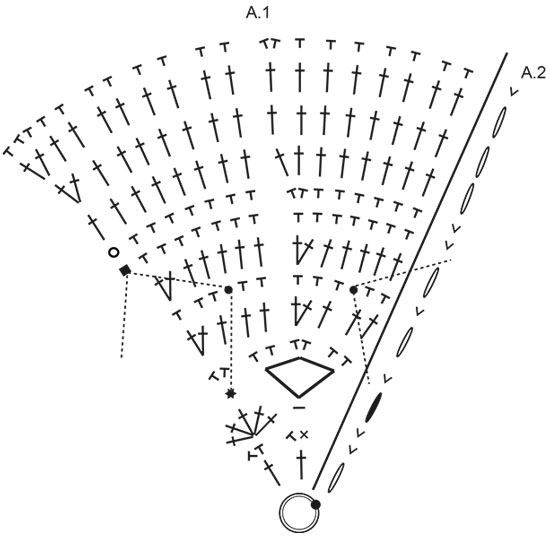
|
|||||||||||||||||||||||||||||||||||||||||||
|
Have you made this or any other of our designs? Tag your pictures in social media with #dropsdesign so we can see them! Do you need help with this pattern?You'll find tutorial videos, a Comments/Questions area and more by visiting the pattern on garnstudio.com. © 1982-2024 DROPS Design A/S. We reserve all rights. This document, including all its sub-sections, has copyrights. Read more about what you can do with our patterns at the bottom of each pattern on our site. |
|||||||||||||||||||||||||||||||||||||||||||








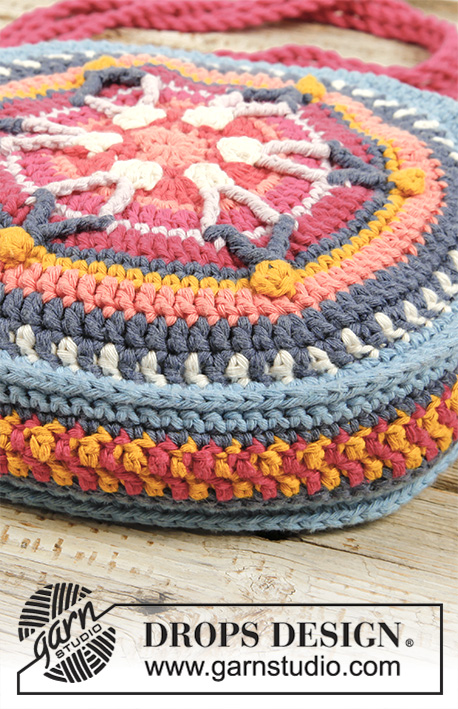




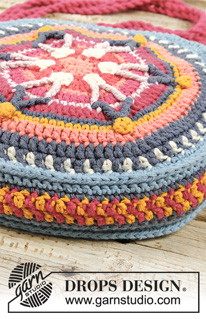
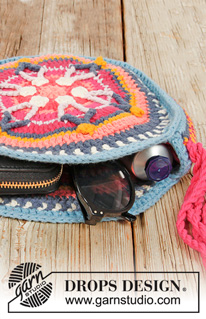
























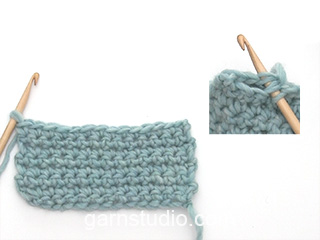







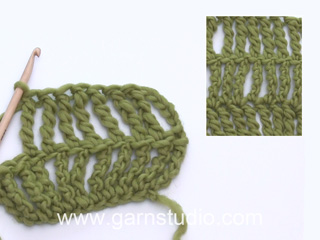

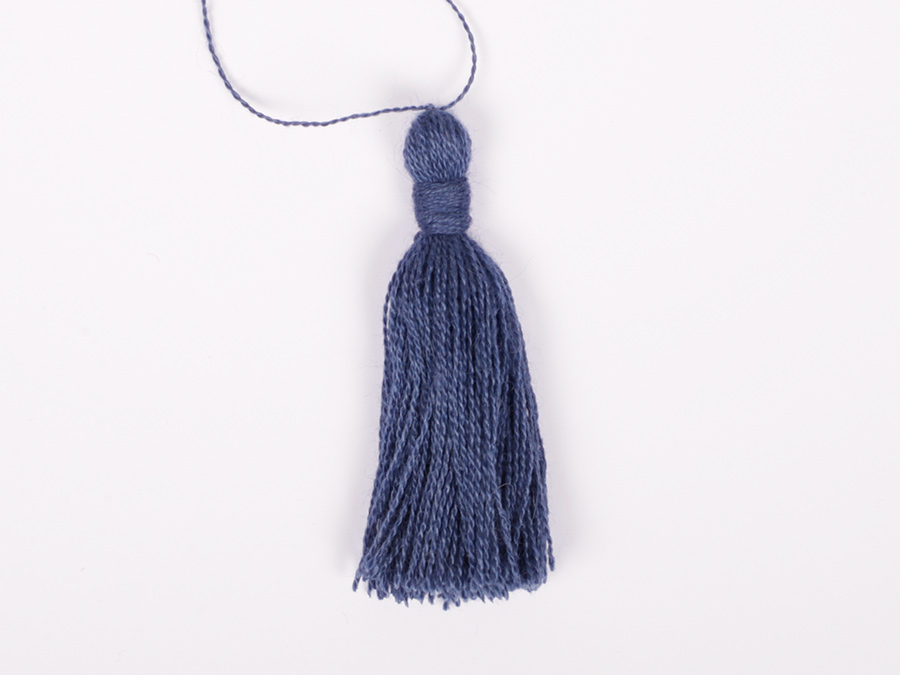

















Comments / Questions (32)
Bonjour, J'ai fait l'échantillon et j'obtiens toujours plus que 10 cm, même avec un crochet 3 je suis à 12,5 cm de large... je ne comprends pas pourquoi j'ai autant d'écart. Pouvez-vous m'aider parce que du coup mon sac va être, encore une fois, trop grand.
11.11.2023 - 18:10DROPS Design answered:
Bonjour Mme Dolfin, essayez avec un crochet 2,5 et/ou bien essayez de resserrer vos mailles un peu plus, on a toutes une façon différente de crocheter, mais si vous n'avez pas l'échantillon, vous ne pourrez pas avoir les bonnes mesures finales, et votre sac sera toujours trop grand (pensez à vérifier la hauteur aussi, essayez de "tirer" un peu moins vos brides en hauteur si c'est un problème). Bon crochet!
13.11.2023 - 07:44Bonjour, J'utilise la même laine et le même crochet qu'indiqués et mon cercle fait 26cm et non pas 20, cela me semble un gros écart. Le sac fait-il vraiment 20 cm ? Mon échantillon est bon. Merci pour votre réponse.
15.09.2023 - 07:46DROPS Design answered:
Bonjour Mme Dolfin, aviez-vous bien le bon échantillon? Vous devez avoir 18 brides en largeur et 10,5 rangs de brides en hauteur pour 10 x 10 cm - pensez à bien resserrer vos mailles en hauteur ou essayez de moins les étirer si besoin. Bon crochet!
15.09.2023 - 08:32Buongiorno volevo chiedere se le prime tre catenelle sostituiscono la prima magia alta e una catenella sostituisce la prima maglia bassa dei giri.grazie
06.06.2023 - 22:45DROPS Design answered:
Buongiorno Loretta, se necessario, queste indicazioni vengono riportate direttamente nelle spiegazioni. Buon lavoro!
07.06.2023 - 08:23Buongiorno non capisco il giro 4 dove devo lavorare le 5 maglie nel punto basso segnalato nel rigo 2 o attorno alle catenelle del rigo 3 e allora perché ho messo un segnapunti nel rigo 2. Grazie
05.06.2023 - 16:39DROPS Design answered:
Buongiorno Loretta, nel giro 3 deve lavorare 5 maglie nella magliadel giro precedente; il segnapunti al giro 2 serve ad indicare dove lavorare il simbolo a "rombo" del giro 4. Buon lavoro!
07.06.2023 - 08:32Merci pour tous ces tutos très bien expliqués, votre site est une mine d'or. Jusqu'ici je suis parvenue à venir à bout de toutes les difficultés mais j'ai un problème avec le rang 7 du côté du sac. Si je suis les explications écrites, il ne me reste que 2 mailles serrées à la fin du rang et non 3. Si on compte la 1ere en l'air au début, ne faut-il pas faire 1 seule maille serrée et non 2 avant la 1ere quadruple bride ?
03.06.2022 - 19:01DROPS Design answered:
Bonjour Marie, le 7ème tour est le même que celui dessiné dans le diagramme; chaque diagramme à répéter commence par 2 mailles serrées et se termine par 3 mailles serrées, autrement dit, vous devez toujours avoir 5 mailles serrées entre les quadruples brides: 2 ms au début du tour, 5 ms entre chaque et 3 ms à la fin du tour, avant la maille coulée. Peut-être que ce rang sur le diagramme pourra mieux vous aider? Bonne continuation!
07.06.2022 - 08:07Non capisco bene il giro 4.ho capito che devo fare 5 punti alti nella m. bassa segnata nel secondo giro, ma cosa significa anche di lavorare attorno alla catenella del terzo giro? Grazie
21.12.2021 - 16:09DROPS Design answered:
Buonasera Anna Maria, in quel punto deve lavorare ATTORNO alla maglia e non NELLA maglia. Buon lavoro!
05.03.2022 - 22:22Ik kan het patroon niet meer vinden van de tas, hoe moet ik dit nu doen?
16.03.2021 - 07:51DROPS Design answered:
Je kunt het patroon uitprinten met de knop 'Afdrukken' onderaan de materialenlijst. (p.s.: Vorige week was er een probleem met het laden van afbeeldingen op de site, wellicht was dat de reden dat je het patroon even niet kon vinden...)
22.03.2021 - 20:58Scusatemi, ho capito come fare. Non occorre rispondere alla mia domanda precedente. Grazie
03.01.2021 - 10:13Non capisco il giro 4: in particolare, nella descrizione dice di lavorare le varie maglie nella maglia indicata nel secondo giro (capisco di lavorare le 5 maglie indicate tutte in questa maglia del secondo giro) , ma poi dice anche di lavorare attorno alla catenella del terzo giro: cosa vuol dire in termini pratici? Cosa devo lavorare attorno alla catenella del terzo giro? Grazie.
03.01.2021 - 08:30Die Kordel sind fertig und von der Aussenseite gefädelt und verknotet. Aber was mache ich mit den anderen Ende der Kordel,werden diese auch verknotet?
25.11.2020 - 21:14DROPS Design answered:
Liebe Anke, die Anleitung wurde soeben etwas umformuliert, um es deutlicher zu machen, wie die Kordeln befestigt werden. Sie haben ja pro Seite 2 Löcher. Es werden jeweils 2 Kordeln pro Loch von außen nach innen durchgefädelt und auf der Innenseite verknotet. Das machen Sie an beiden Seiten der Tasche. Viel Spaß mit dieser schönen Tasche!
27.11.2020 - 09:02